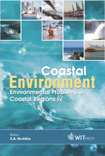Use Of Continuous Turbidity Sensor In The Prediction Of Fine Sediment Transport In The Turbidity Maximum Of The Trent Estuary, UK
Price
Free (open access)
Transaction
Volume
58
Pages
Published
2002
Size
453 kb
Paper DOI
10.2495/CENV020201
Copyright
WIT Press
Author(s)
S B Mitchell & J R West
Abstract
Results from field observations using continuous monitors of turbidity and water level at Burringham, R Trent, UK, are presented, for the period 18 May to 3 December 1997. These results, together with measurements of vertical profiles of velocity and suspended solids concentration (SSC) at a nearby location enable some conclusions to be drawn relating to the response of the TM to tidal range (TR) and fresh water flow (Qf) in the tidal Trent. The temporal variation in vertical profiles of velocity and SSC means that interpretation of results from fixed continuous monitors must be carried out very carefully, owing to the high degree of suspended solids stratification at high slack water and during the first few hours of the ebb tide. SSC is a function of local bed shear stress (related to tidal range) and sediment availability, which is controlled by the antecedent Qf. A semi-empirical predictive relationship is recommended for predicting flood and ebb tide SSC, based on tidal range, for various different antecedent fresh water flow conditions. 1 Introduction Understanding the transport processes of fine, cohesive sediment in macrotidal estuaries is important for the effective management of these complex systems. The interaction of tidal activity and fresh water input creates a highly dynamic environment. The resulting temporal and spatial variation in the suspension, transport and deposition of sediment, and the concentration of suspended material in the water, may affect, for example:
Keywords





